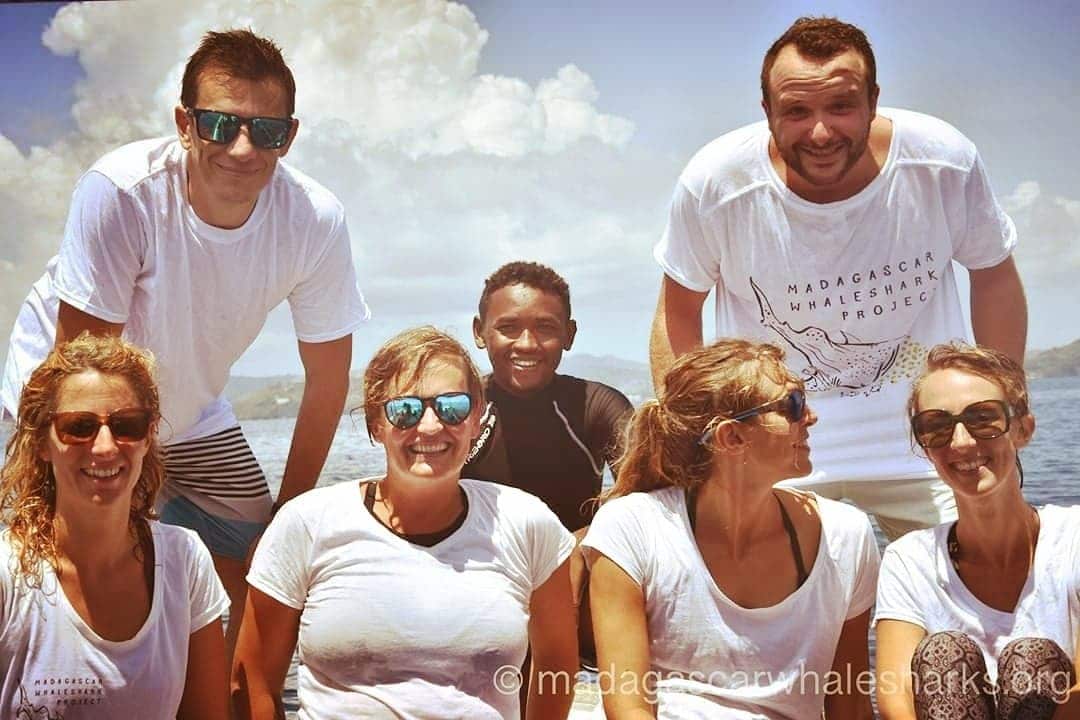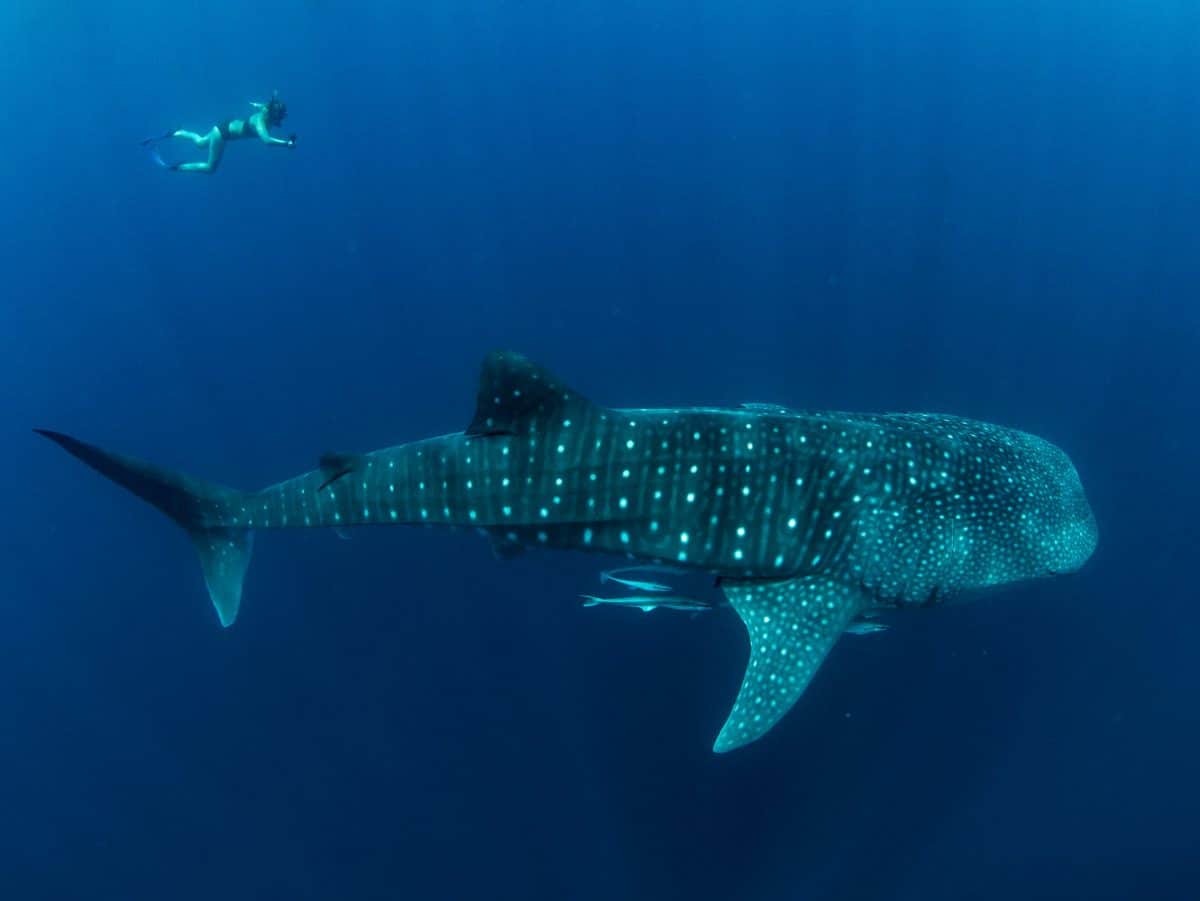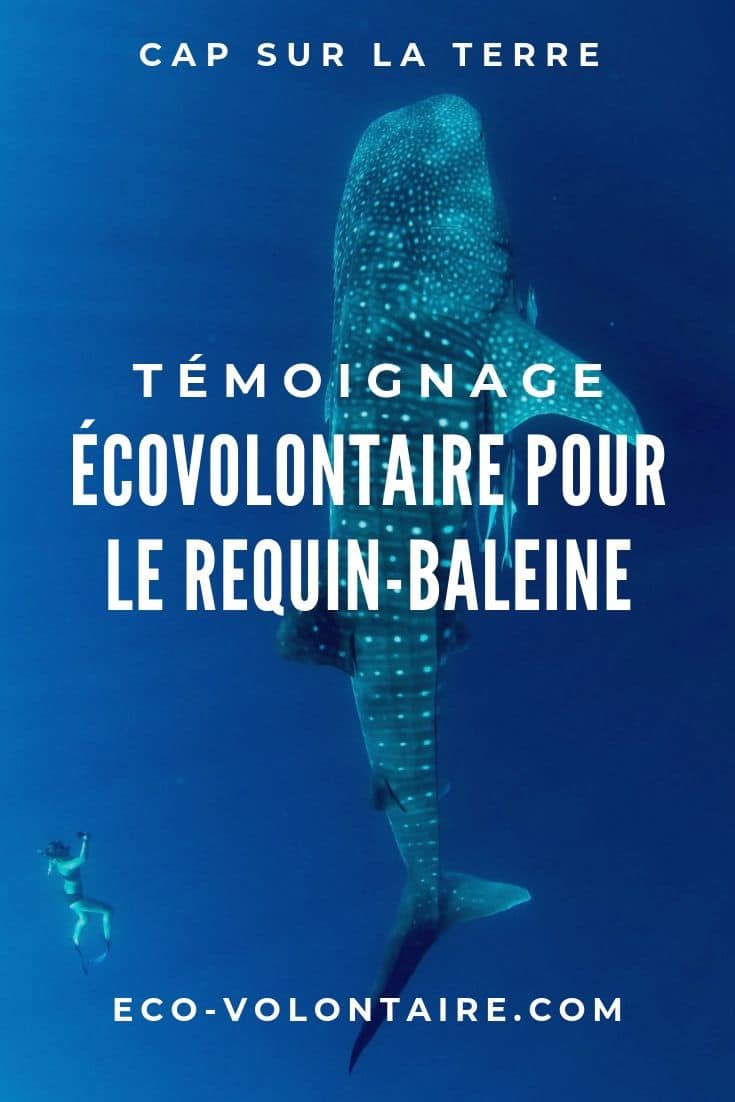Léa est partie écovolontaire à Madagascar sur l’île de Nosy Be pour étudier le requin-baleine. Témoignage.
Cap sur la Terre : Léa, peux-tu présenter l’association pour laquelle tu as travaillé à Madagascar ?
Léa : Le programme a été mené par Madagascar Whale shark Project et Mada Megafauna. Mada Megafauna est installée à Nosy Be, une petite île assez touristique située au nord ouest de Madagascar. Son objectif est d’étudier et de protéger toute la biodiversité marine de Nosy Be et du canal de Mozambique, à savoir : les cétacés, les tortues marines et les requins baleines. A l’initiative du projet sur les requins baleines, on retrouve Stella Diamant, une biologiste originaire de Belgique qui à l’occasion d’un voyage à Madagascar a découvert l’importante population de requins baleines dans le canal du Mozambique. Stella a monté un projet pour étudier cette population de requins baleines qui, à ce jour, est très mal connue. En 2017, elle a mis en place un programme d’écovolontariat dans lequel je me suis engagée.
En quoi consiste ce programme d’écovolontariat ?
Du mois d’octobre au mois de décembre, les écovolontaires travaillent sur les requins baleines. Il s’agit d’un programme d’identification dont l’objectif est d’alimenter une banque de données mondiale sur la population des requins baleines. Cette étude est menée en partenariat avec le FIU Florida Institut Université. A Nosy Be, ce sont essentiellement des juvéniles qui viennent de septembre à décembre. A ce jour, près de 300 individus ont été identifiés. Concrètement, en tant que volontaire, nous effectuons des mise à l’eau, c’est-à-dire que nous nous mettons à l’eau, nous prenons des photos des requins-baleines, notons leur comportement et leur point GPS. Toutes ces informations sont ensuite rentrées sur ordinateur afin d’alimenter la banque de données.
Il existe une deuxième programme d’écovolontariat, d’août à septembre, centré sur les baleines à bosse. Les baleines à bosse s’accouplent et mettent bas dans les eaux du nord ouest de Madagascar. L’objectif de ce programme est de les recenser pour les étudier et mieux les protéger.

Concrètement, comment se déroule une mission d’écovolontariat avec Mada Méga Fauna ?
Les trois premiers jours sont consacrés à la formation. C’est pour cela que l’association demande à ce que l’écovolontaire soit présent au minimum trois semaines. Ces trois jours servent à développer ses connaissances sur l’espèce étudiée et à avoir la bonne technique pour les approcher. Nous sommes accompagnés ar une scientifique. Une fois cette formation terminée, nous partons seul, avec les bateaux d’excursionnistes mener le travail d’identification. Nous avons deux jours de repos par semaine lors desquels nous pouvons visiter cette petite île paradisiaque qu’est Nose By. De temps en temps, nous partons en bivouac !
La population locale est-elle intégrée au projet ?
Oui bien sûr. Déjà, nous travaillons avec les prestataires touristiques qui organisent les sorties pour s’approcher des zones où les requins-baleines évoluent. Plus généralement, l’association mène un travail pour promouvoir une tourisme responsable. Elle travaille avec les écoles et avec des animateurs Malgaches. L’association travaille beaucoup avec les prestataires touristiques pour le développement d’une approche responsable lors des sorties touristiques pour observer les cétacés ou les requins-baleines. Une charte d’approche a même été créée.
Quel est le comportement à adopter pour observer sans déranger les requins-baleines ?
Il y a plusieurs règles à respecter, pour notre sécurité (même si le requin-baleine n’est pas dangereux en soit car se nourrit de plancton), et pour la leur. Le but est d’instaurer une cohabitation intelligente entre le requin-baleine et l’homme. Déjà, il y a une distance à respecter lorsque l’on est nageur. Il faut se tenir à plus de trois mètres du poisson, ne pas plonger dans l’eau mais y glisser. Bien sûr il ne faut pas toucher les spécimen et ne pas mettre le flash lorsque vous les prenez en photo. On estime le nombre de nageurs à dix maximum pour rester dans une démarche éthique.
Il y a des règles également pour les bateaux qui doivent se tenir à quinze mètres du poisson, être au point mort lors de la mise à l’eau des nageurs et ne pas dépasser les 6 noeuds dans un cercle de 150 mètres autour du requin-baleine. Il ne doit y avoir qu’un seul bateau par requin. Les autres attendent à 150 mètres. De nombreux prestataires sur Nosy Be ont adopté cette charte d’approche.
Pour s’engager auprès requins-baleines comment faut-il faire ?
Il faut s’adresser à l’association Madamegafauna ou à l’association Whale Shark Project . Les écovolontaires restent 3 semaines et donnent une participation de 1200 euros. Vous êtes logés dans des chambres juste au dessus du bureau de l’association. Vous êtes également en demi pension, cequi veut dire qu’un repas par jour est à votre charge. Mais il faut savoir que vous pouvez manger pour seulement quelques euros sur l’île.
Quels sont tes prochains projets ?
Je repars dès septembre sur l’île de Nosy Be en tant que volontaire coordinatrice. Cette année, je fais toute la saison !


